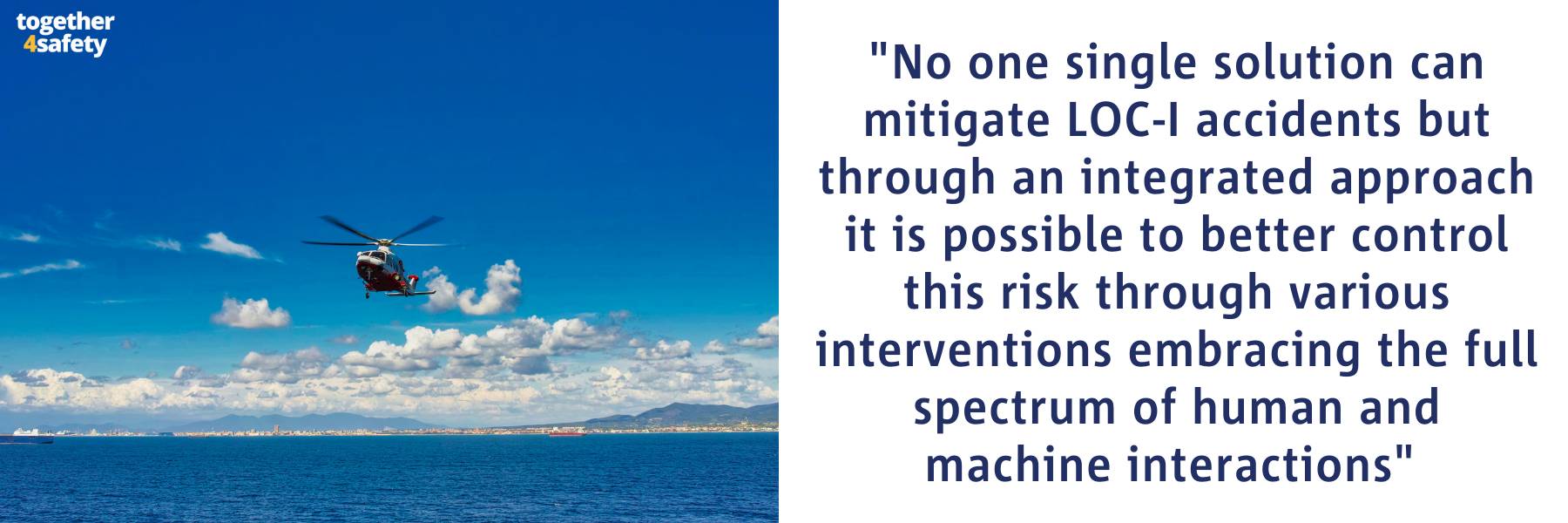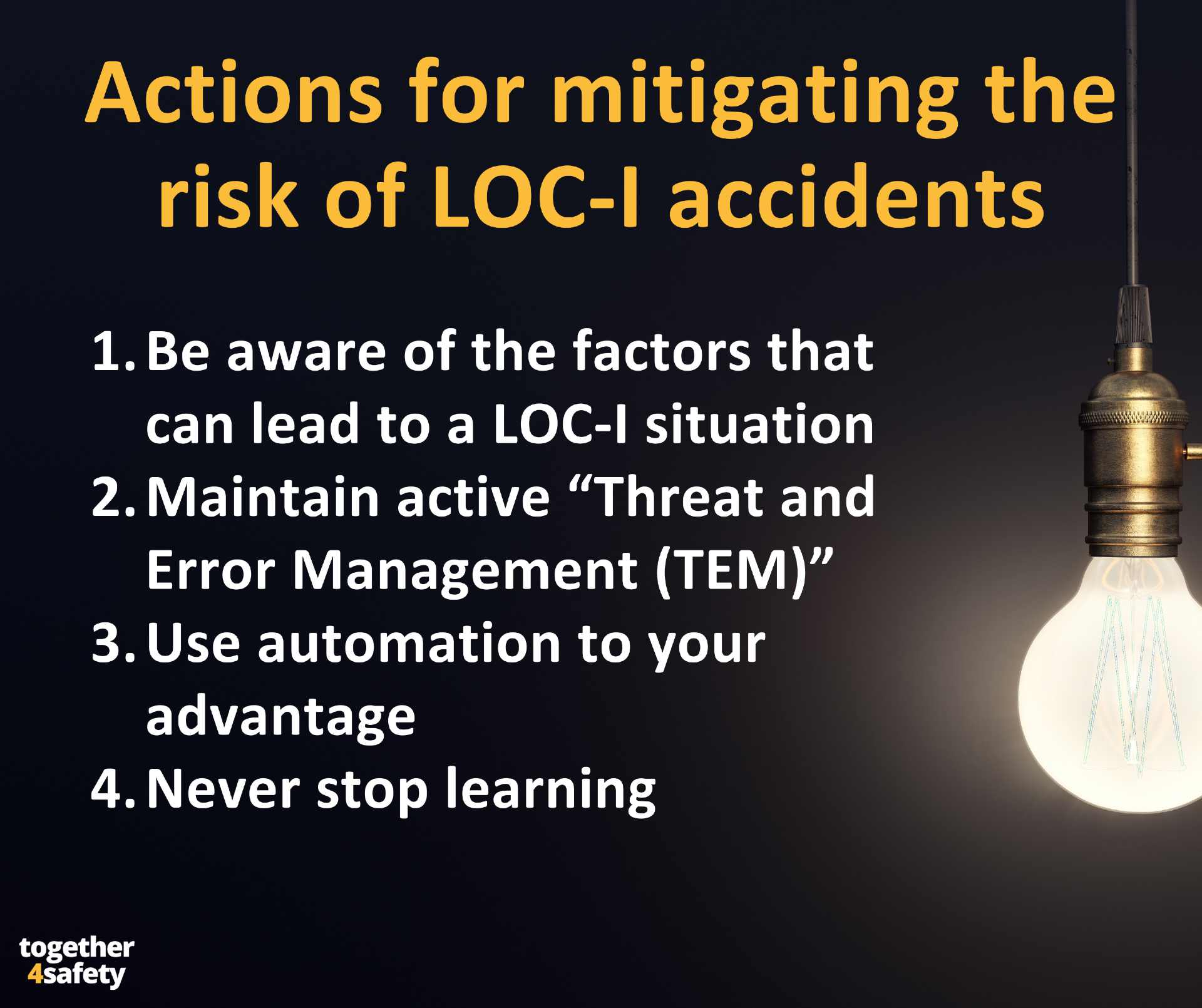A Leonardo Helicopters video promoted by EASA Together4Safety and the European Safety Promotion Network Rotorcraft (ESPN-R).
The Leonardo Helicopters Loss of Control Inflight (LOC-I) Prevention & Mitigation Challenges video is intended for those involved in both Training and Flight Operations. In this video, a Flight Instructor defines LOC-I, describes the risk and provides safety tips to mitigate the risk and avoid accidents.
LOC-I is the number one safety risk for rotorcraft!
LOC-I is an extreme manifestation of a deviation from the intended flight path. These accidents often result from failure to prevent or recover from an upset. Data show that aircraft upset accident is the top key risk area, both in terms of number and seriousness of occurrences. LOC-I is the most frequent and serious accident type and the number one killer in helicopter operations!
Watch the video to understand more about preventing LOC-I accidents
In this video, a Flight Instructor from Leonardo Helicopters defines the concept of LOC-I, the risk it poses to pilots and provides tips to mitigate the risks and avoid accidents, using an integrated approach making use of both human and technical solutions.
Shot at the Leonardo Helicopters Flight Training Academy in a AW189 Full Flight Simulator (FFS), the video presents a simulated scenario that could induce spatial disorientation in pilots and result in an upset. It presents a technique aimed to avoid loss of control known as “Wing Level Mode” (WLM) using a dedicated Pushbutton on Cyclic, which automatically stabilises the helicopter.
In the second part of the video, a Leonardo engineer describes in more details the design and use of this Wing Level system developed by Leonardo Helicopters to prevent loss of control in flight.
In the last part of the video, the Flight Instructor provides conclusive recommendations to avoid LOC-I accidents with focus on proper use of automation, learning and sharing of learning.
Key features of LOC-I
- LOC-I is one of the most dangerous scenarios for a helicopter pilot and the most common cause of fatalities.
- LOC-I is characterised as an accident or incident in which the pilot was unable to maintain control of the aircraft. It is defined as a significant deviation from the intended flight path and is usually preceded by an upset. An upset is an in-flight condition when an aircraft unintentionally exceeds parameters normally experienced during the normal line of operations.
- The EASA Annual Safety Review 2020 shows that the aircraft upset is the highest risk area for helicopter operations, particularly for General Aviation (GA).
Mitigating LOC-I risks

ICAO recommends 3 levels of intervention:
- Awareness: Addressing the knowledge element by developing Threat and Error Management (TEM) and Crew Resource Management (CRM) skills in pilots.
- Prevention: Dealing with the early recognition and avoidance of aircraft upset.
- Recovery: When the aircraft has entered an undesirable aircraft state and the pilot must intervene to recover.
The video presents a simulated scenario where the pilot is flying traffic patterns during night-time operations with autopilot Flight Director (FD) modes engaged. Unexpectedly, the Traffic Alert and Collision Avoidance System (TCAS) alerts the pilot to the presence of traffic, which captures and focuses the pilot’s attention. The pilot reacts, reverting to manual flight by disengaging the FD modes and manoeuvring through pressing the force “Trim Release” button to avoid possible in-flight collision. This could induce a pilot spatial disorientation that might lead to an undesirable aircraft state if the flight parameters are not adequately monitored.
Key actions and considerations

- Be aware of the factors that can lead to a LOC-I situation: LOC-I situations are either Pilot/ Human-induced, Environment-induced, or Systems-induced. Consider the different situations you might operate in and where LOC-I could pose a risk to the safety of your flight.
- Maintain active “Threat and Error Management (TEM)”: TEM aims identify and recognise threats, reduce errors, and prevent undesirable aircraft states that can potentially lead to accidents, including LoC-I accidents.
- Use automation to your advantage: In highly automated helicopters, the optimal use of automation is an additional resource to reduce pilot workload. This includes the Flight Director (FD) modes coupled with the Autopilot. The AW189 and other aircraft types are equipped with a function known as Wing Level that helps prevent upset. Wing Level is a Flight Control System (FCS) mode that automatically acquires a safe Nose Up pitch and Wing Level roll attitude. Wing Level is activated through a single push button on the Cyclic and status indication is displayed on the Primary Flight Display (PFD). Once the Level Wing mode is engaged, the helicopter smoothly stabilises to a safe attitude. Automation is a wonderful thing as long as you are in charge of it. See also the Leonardo helicopters video Automation and Flight Path Management | EASA Community (europa.eu) published in 2020.
- Never stop learning: A good pilot always remains focused on broadening their knowledge and sharing their experiences with others. Learning is vital because successful prevention is always better than any recovery!
References
Leonardo Safety Promotional Materials: Safety Promotional Materials - Leonardo - Aerospace, Defence and Security (leonardocompany.com)
Leonardo Helicopters YouTube channel: Leonardo Company - YouTube
EASA Annual Safety Review 2020: easa_asr_2020.pdf (europa.eu)
EHEST Leaflet HE8 The Principles of Threat and Error Management for Helicopter Pilots, Instructors and Training Organisations: EHEST Leaflet HE 8 The Principles of Threat and Error Management for helicopter Pilots, Instructors and Training Organisations | EASA (europa.eu)
Automation and Flight Path Management video by Leonardo and EASA Together4Safety article: Automation and Flight Path Management | EASA Community (europa.eu)

You are not allowed to comment on content in a group you are not member of.
Rotorcraft